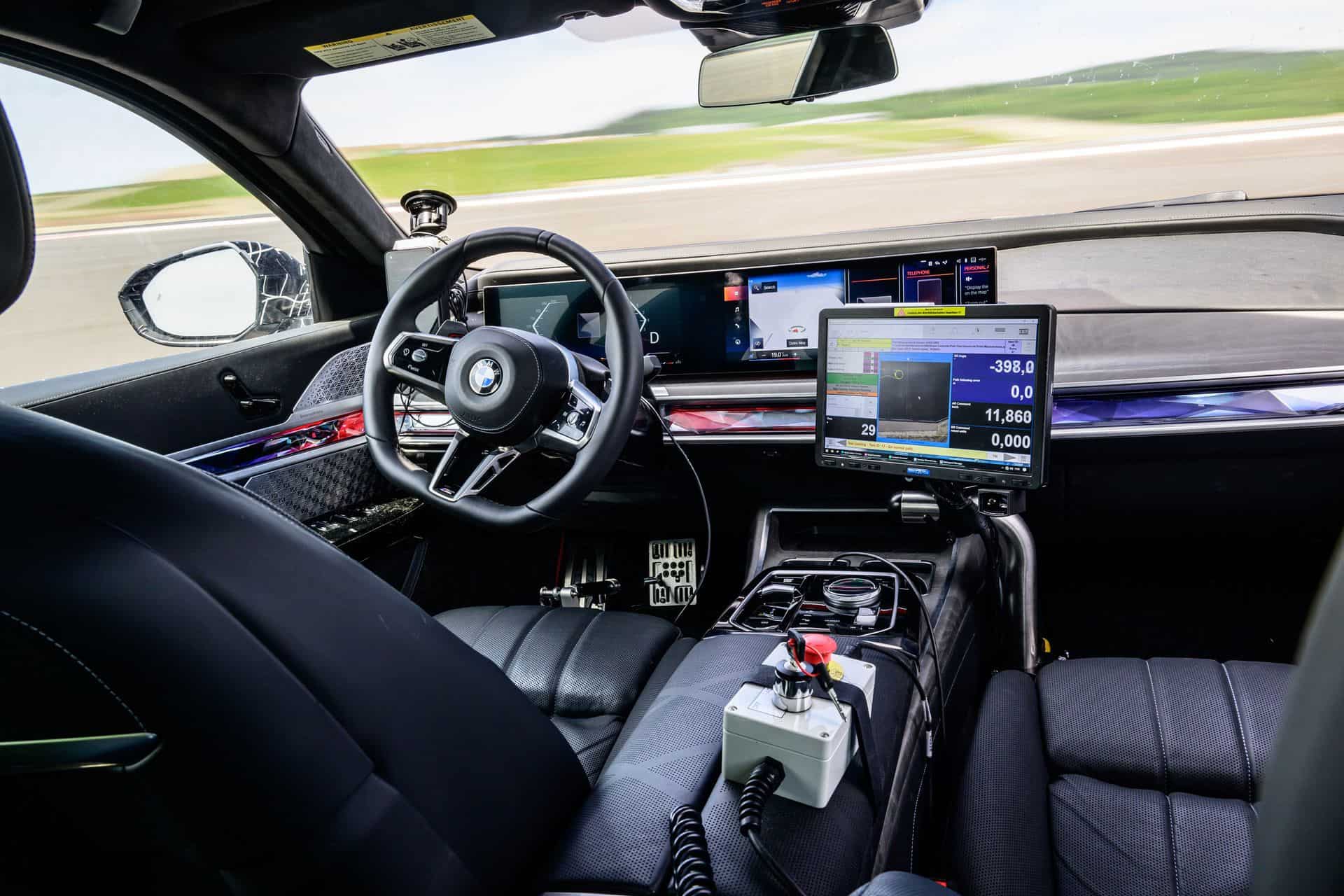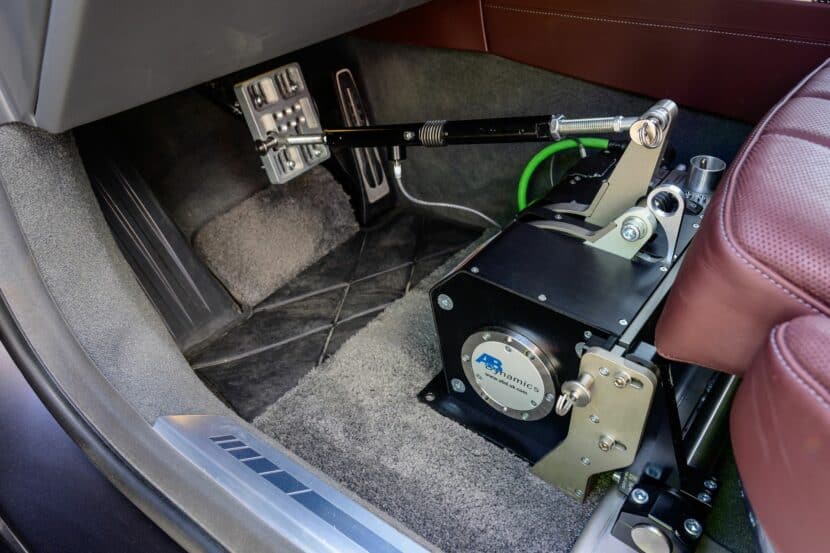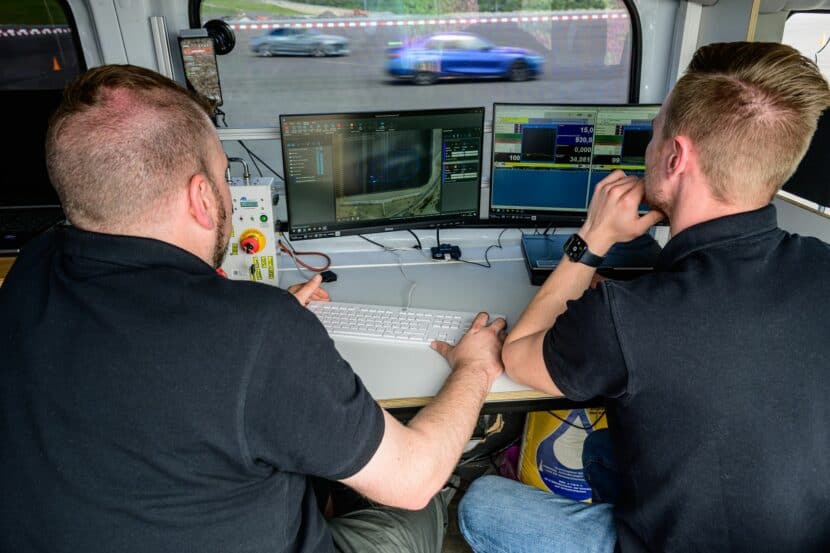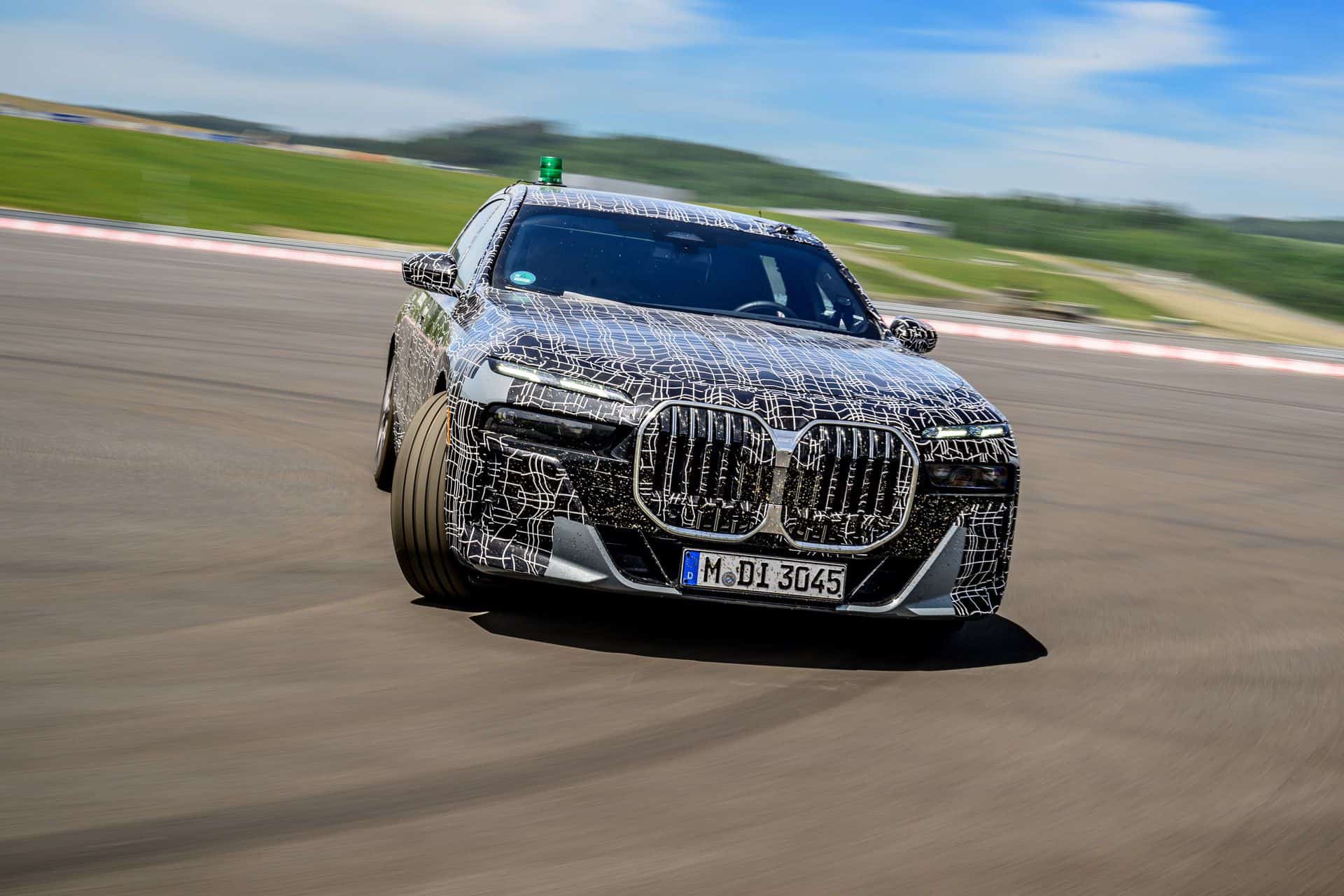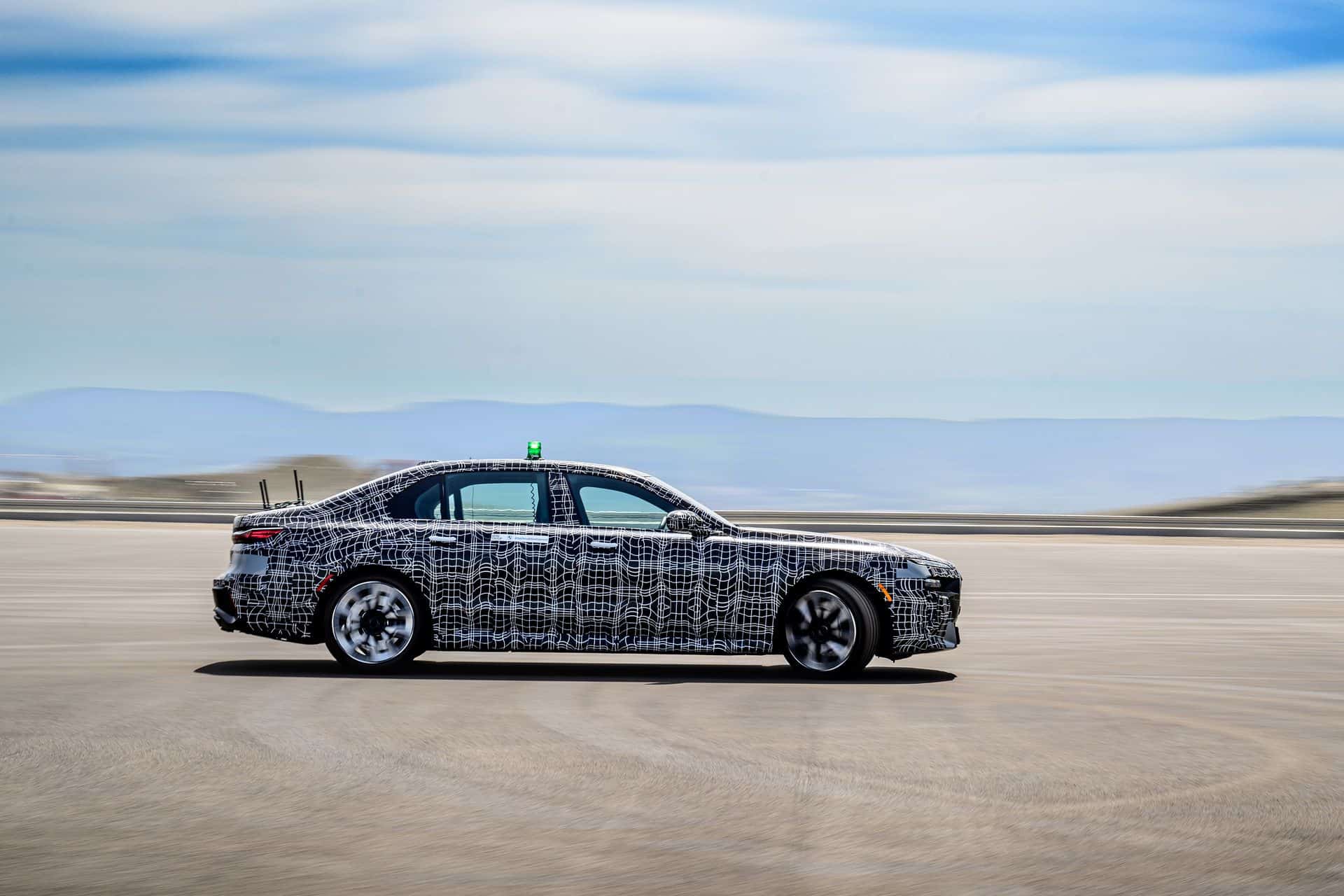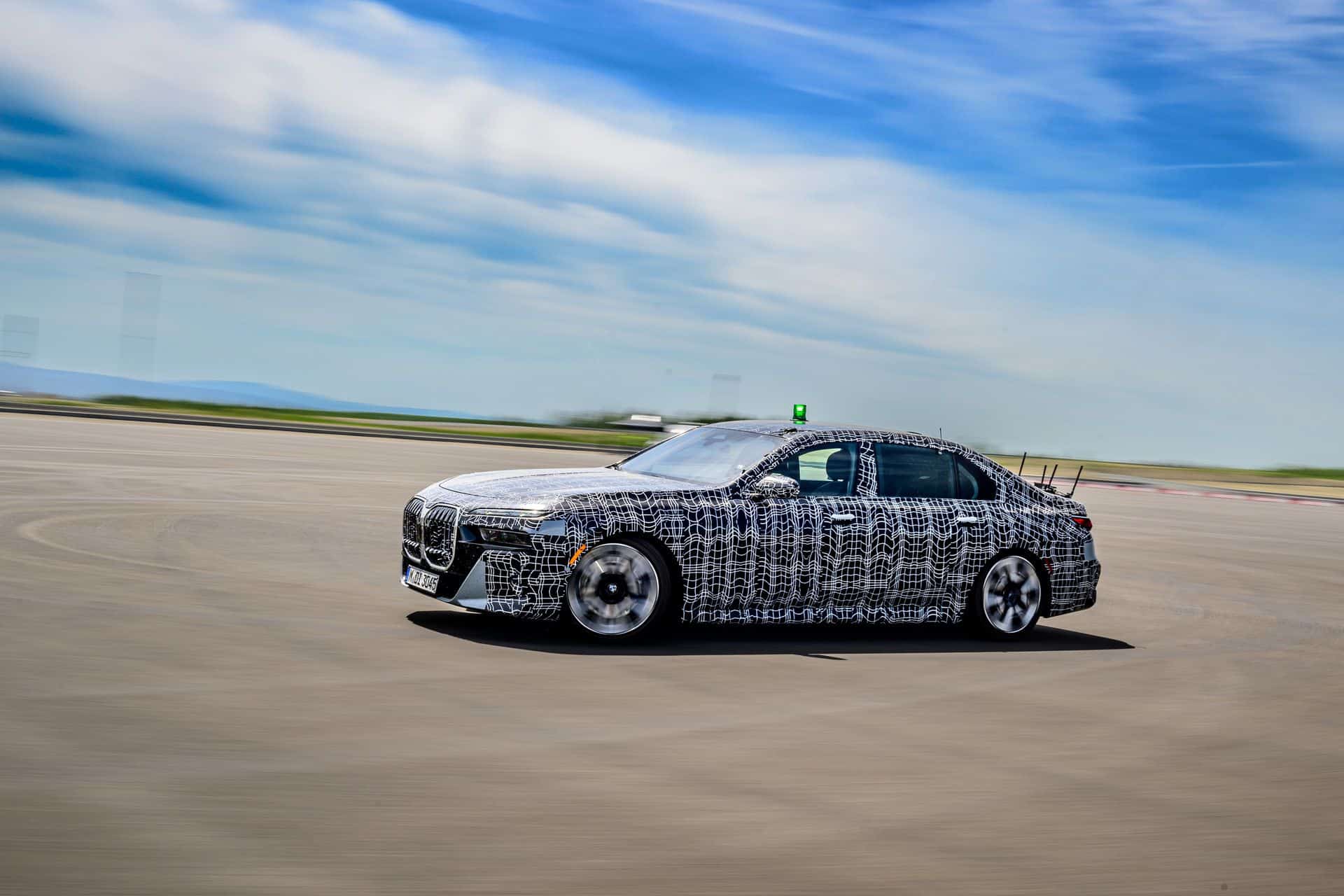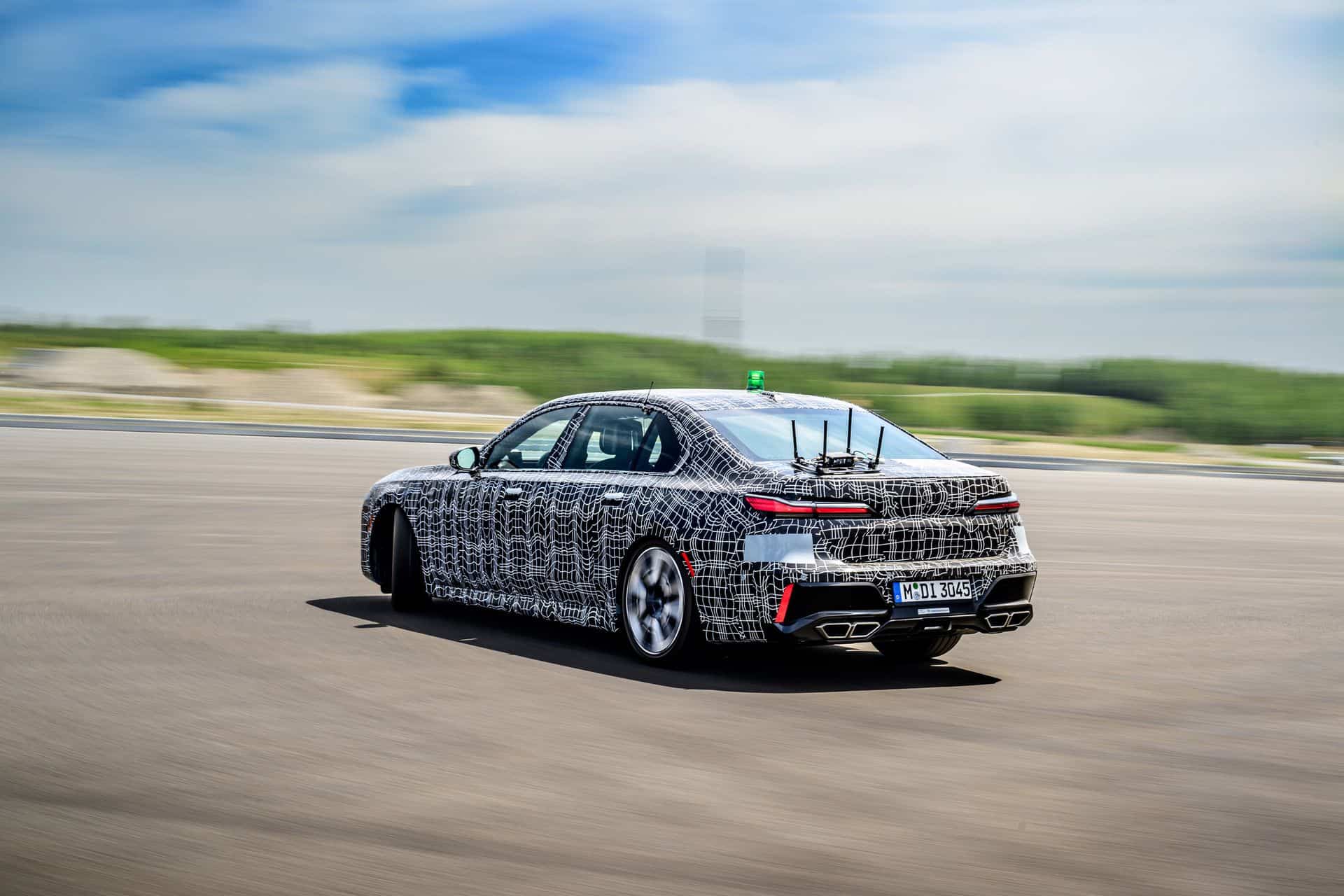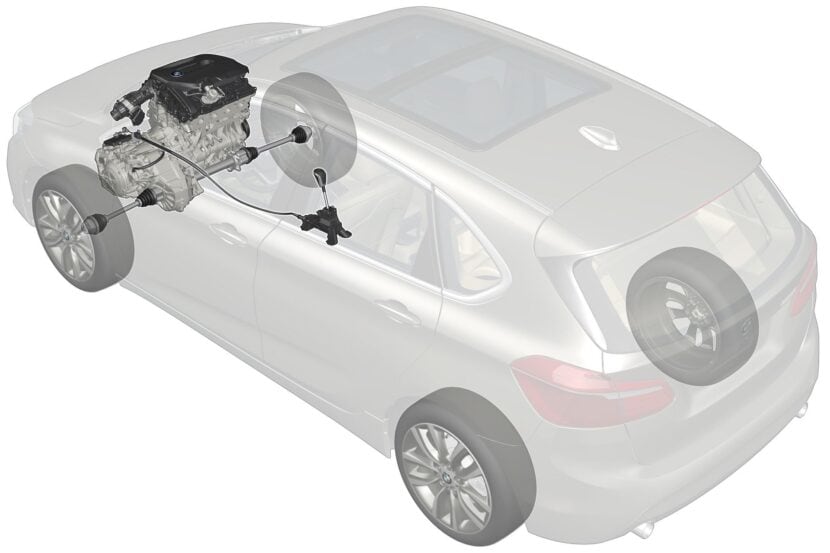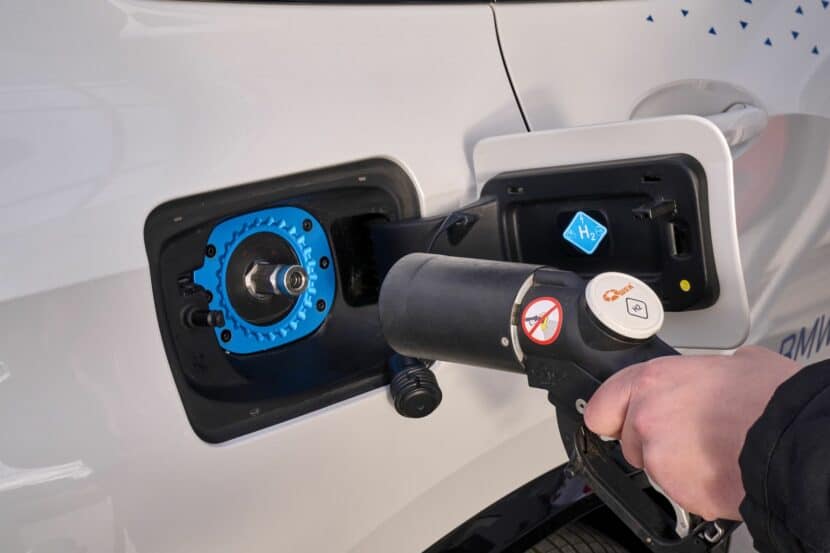In case you missed it, Level 3 autonomy is coming to a new BMW near you very soon. But ramping up autonomous driving wasn’t cheap – or quick. BMW needed to quickly accrue miles on test vehicles while simulating real-world driving. Thus, the “driverless@development” initiative was brought to life. Using vast amounts of open space and plenty of advanced sensors and cameras, a field of driverless BMWs – everything from 7 Series to even an M3 – meander about, generating terabytes of data to aid BMW in their self-driving ventures.
The benefits of using driverless cars for testing
In the newest BMW facility – the FMDC in Sokolov, Czech Republic – BMW uses an array of technology to command these driverless cars. They drive a variety of speeds – up to 122 mph – alternating braking intensity and acceleration. The mechanical precision offered by computer-controlled vehicles would be impossible for a human to replicate. Think: exactly the same accelerator depressions countless times per day. Identical brake pressure application thousands of times each week. Plus, it’s a cost and time-saving measure, freeing engineers to work on other things. Finally, it’s less taxing on employees – there are only so many times you can drive in circles on the tarmac – and reduces the risk of accidents and damage.
Last year was my first encounter with driverless testing cars when BMW showcased their iX as a demo vehicle. During this memorable experience, the driverless iX took me on a track near Munich. It effortlessly navigated through corners and reached speeds of up to 100 km/h, leaving me impressed with its performance. This time around, I’m in Sokolov in the back seat of a BMW 7 Series.
How a single engineer can control multiple vehicles
The 7 Series began traveling on a pre-defined path, surrounded by a fleet of M cars performing similar tasks. The self-driving prototypes are trained to perform these tasks on a daily basis, collecting data and relaying back to Munich via an LTE connection. Inside these autonomous BMWs, you’ll find additional screens and equipment designed to monitor the vehicle. A robotic “leg” facilitates braking, and an emergency stop button sits prominently on the center armrest. It only takes about 24 hours to outfit nearly any BMW with all the necessary gadgetry.
With a single engineer now able to control up to five vehicles at once, it’s safe to say that the tens of thousands of miles that these vehicles have covered are primarily responsible for the quickly-evolving nature of autonomous vehicles. Just think – the next time you’re driving a BMW with advanced driver aids, you can thank the driverless@development team. That is, a group of unmanned cars making moves in the Czech Republic.


